You can use predict to get the predicted survival at any time and any level of covariates you wish. You haven't supplied your model or your data, so I will create a demo from the survival package's built-in lung data set.
library(survival)
df <- survival::lung[c(2, 3, 4, 5)]
df$time <- (df$time * 2) / 365
df$status <- df$status - 1
model <- coxph(Surv(time, status) ~ age + strata(sex), df)
To get predictions at ten years for both sexes at a range of ages, we create a little data frame with all the variables used in our model but set to the values we want (including status, which is ignored, so we can set that to 0)
new_data <- data.frame(age = rep(50:90, 2), sex = rep(1:2, each = 41),
time = 10, status = 0)
Now we plug this new data into predict with type = "survival" and store it in our new data frame.
new_data$survival <- predict(model, newdata = new_data, type = "survival")
Now we can just plot the result. Here, I'll use ggplot:
library(ggplot2)
ggplot(new_data, aes(age, survival, color = c("male", "female")[sex])) +
geom_line(size = 1.5) +
scale_color_manual(values = c("orangered", "deepskyblue3"), name = "Sex") +
scale_y_continuous(labels = scales::percent) +
labs(title = "10 year survival according to age") +
theme_minimal() +
theme(text = element_text(size = 16))

Created on 2022-03-10 by the reprex package (v2.0.1)
